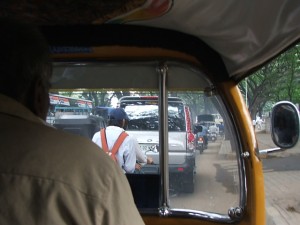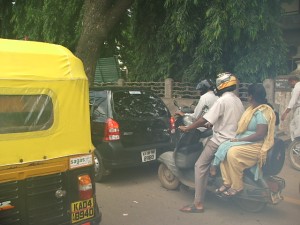2009-09-08: It is really enjoyable to be back behind my desk, here in Dublin. Apologies for the prolonged absence.
Since the middle of June last, my travels have taken me to Turkey, France, Italy, the south-west of Ireland to attend my cousin’s wedding in Cork … and back again to Bengaluru (Bangalore) in Southern India to make an important Keynote Presentation at the 2009 Fire & Safety Association of India (FSAI) National Fire Seminar: ‘Engineering a Safe & Secure India’, which was held on Friday, 28th August, at the Leela Palace Hotel.
My Presentation Title & Abstract …
Sustainable Fire Engineering: Fire Safety, Protection & Evacuation for All
India, like other economically advanced developing countries, is at an important crossroads. Difficult, resource-dependent decisions must be made in the next few short years concerning the rapid implementation of a Sustainable Built Environment across a vast country, i.e. one which must serve local needs and meet regional performance requirements during a long life cycle … one which will be adaptable to climate change, variability and extremes … will be in harmony and dynamic balance with the Natural Environment … and, not least, will be super energy-efficient.
Citizens of Developed Nations also have legitimate expectations. They will express anger when they witness recently constructed buildings in seismic zones collapse, in an earthquake, like a deck of cards (China 2008, Italy 2009) … or they discover that federal/state authorities having jurisdiction, which are funded by their taxes, are ill-prepared to respond effectively to intentional traumatic disruptions to the Social Environment (New York 2001, Mumbai 2008). Retaining the public’s confidence in national institutions is a fundamental political priority.
In the case of all new High-Rise Buildings, Iconic Buildings, and Buildings of Innovative Design or having a Critical Function … Trans-Disciplinary Building Design Teams must, at a minimum, properly respond to the Recommendations of the 2005 & 2008 NIST(USA) Final Reports on the 9-11 WTC 1, 2, and 7 Collapses. In practice, the majority of these Recommendations should be applied to the design of all new buildings !
Fire Engineers, competent concerning the processes of ‘real’ building design and construction, must begin to understand the ‘real’ people who occupy or use buildings, every day of every week, in all parts of India … and that they each have widely differing ranges of human abilities and activity limitations. Just as they are different from each other, they will react differently than expected in a ‘real’ building fire emergency.
Based on a Keynote Presentation before International Council for Building Research (CIB) Working Commission 14 : Fire and Sub-Committee 3 & 4 Members of ISO Technical Committee 92 : Fire Safety, at Lund University in Sweden … and his fire safety texts which have been fully incorporated into International Standard ISO DIS 21542 on Accessibility-for-All, currently under development and due for publication before the end of 2010 … CJ Walsh’s Presentation, at the FSAI National Fire Seminar in Bengaluru, will focus on ‘Fire Safety, Protection & Evacuation for All’.
.
.
END




